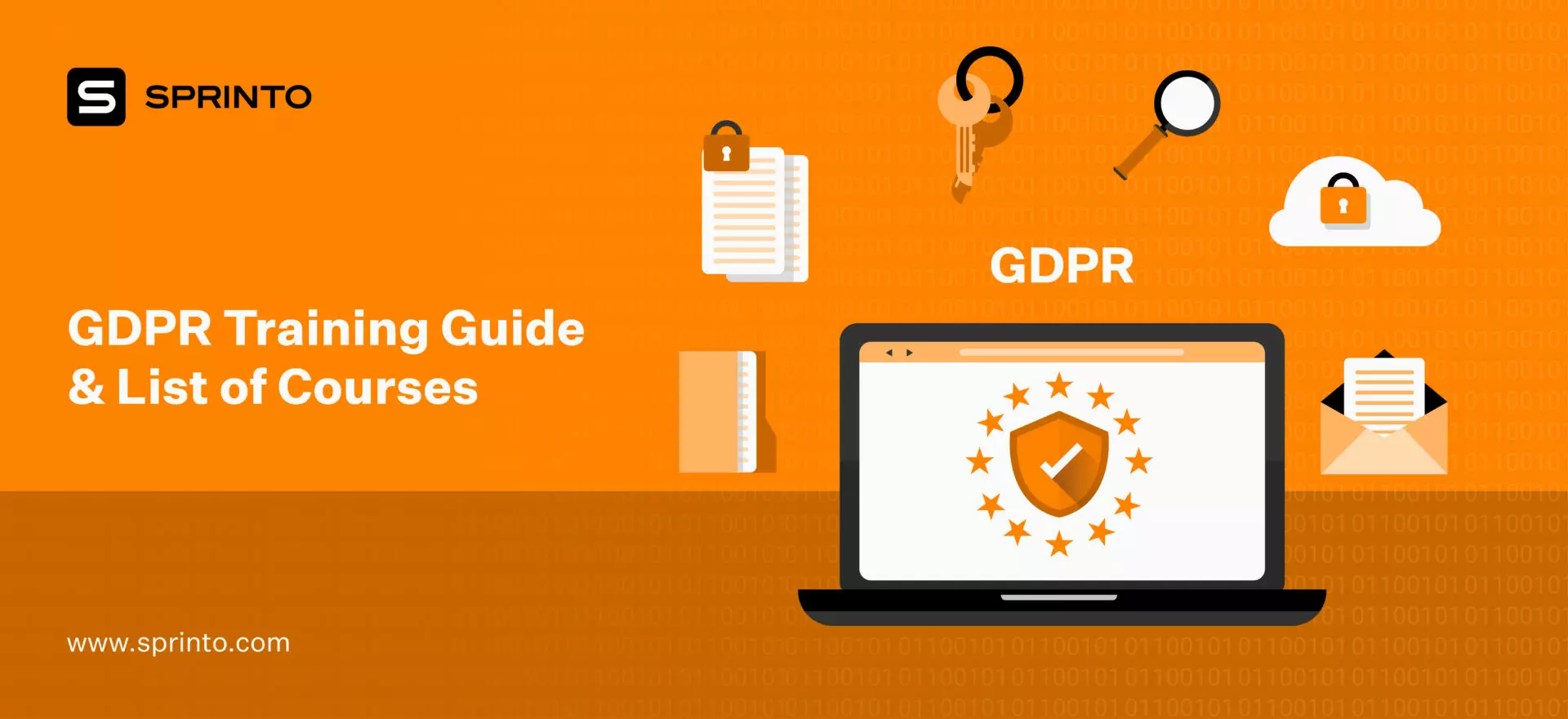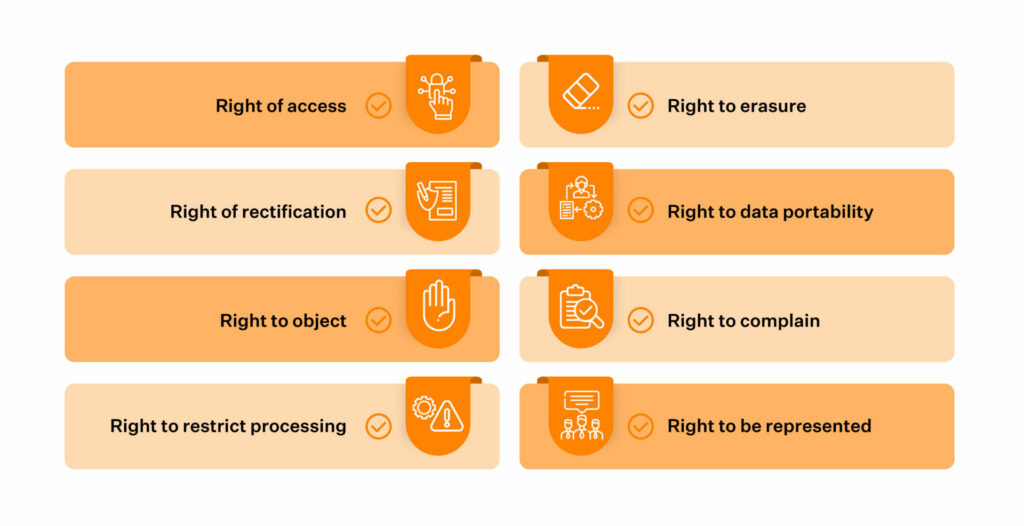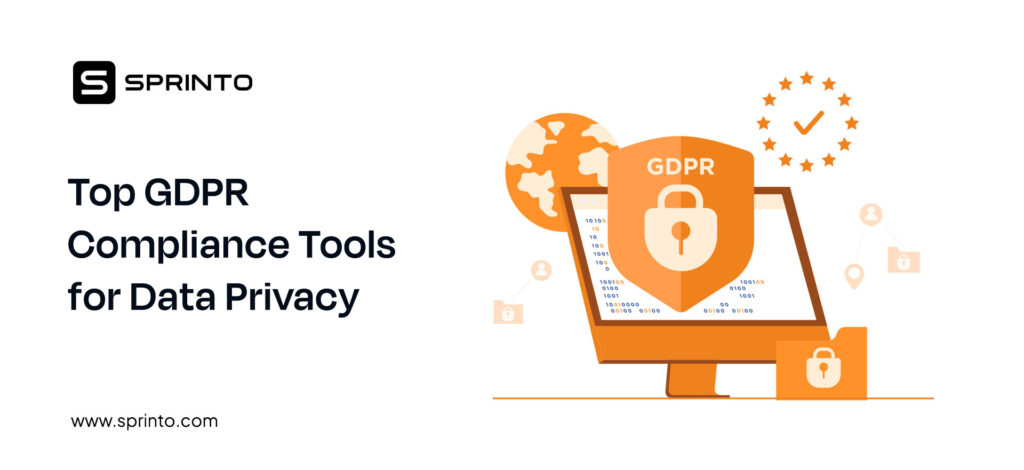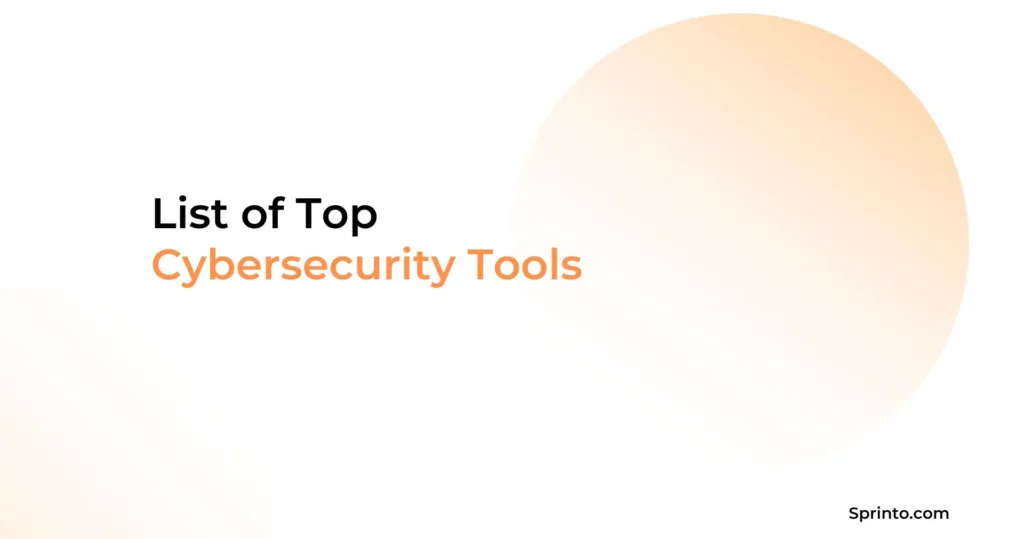
Does your business deal with the personal data of prospects in the European Economic Area (EEA)? Are you looking to acquire General Data Protection Regulations GDPR compliance? Your search for GDPR training courses to help your business become and remain compliant ends here.
The responsibility to be compliant vests not just on GDPR compliance & technology teams but also on every employee in the organization.
EU GDPR itself does not hand out a training curriculum that businesses can follow to a T. Hence, it becomes crucial for organizations to adopt a foundation training program covering the core principles of GDPR entity-level security implementation, data collection and processing, and data-breach scenarios, among others.
In this article, we dive deep into:
- What is GDPR?
- Why GDPR training is essential
- The scope of GDPR compliance training
- The best practices you could include in your business’ GDPR compliance training program
What is GDPR?
General Data Protection (GDPR) is a data privacy and security law regulated by the European Union (EU) to safeguard its citizens’ digital data privacy rights. GDPR Foundation is the latest iteration of the Data Protection Directive launched in 1995 to strengthen the security framework. GDPR Foundation was released to the public in 2018.
EU GDPR protects individuals’ personal information by giving more power to the individual to decide how their data is shared and to what extent.
Organizations will now have to adhere to more stringent laws to safeguard people’s personal data in the European Economic Area (EEA). In addition, they are required to publicly display information on how they intend to safeguard it in their GDPR Privacy Policy.
As an organization aims to become GDPR compliant, its workforce must be trained to deal with the nuances that could arise when handling users’ data.
Scope of GDPR Compliance Training
A good GDPR training course helps organizations ensure they do not violate the regulations laid down by the GDPR law by following the best practices in the following areas.
1. Knowing When and Where GDPR Applies:
Being GDPR compliant is a continuous process, and knowing to whom GDPR applies is essential. The procedures recommended here aim to help you maintain ongoing compliance.
Also, any employee handling the personal data of EU citizens should be trained on the geographical scope of GDPR.
2. Being true to the Six Core Principles of GDPR
- Personal Data: The fundamentals that define private data in GDPR are subject to interpretation. Data Attributes like Gender and medical history are considered sensitive. If any data set includes information on criminal history, a more layered approach to safeguarding it is advised.
- Process Data: Be Fair, Legal, and Transparent: A good program equips all the staff in an organization with the information they need to process GDPR data fairly and legally. When the user exercises their right to withdraw their information, the controller (organization in context) should be transparent about their processing request.
- Define Your Purpose: When collecting user data, it is imperative that you express intent on how and where you use the data.
- Data Collection: With GDPR compliance training, employees can be trained to collect data correctly. It is imperative that businesses only collect the amount of information required for the purpose stated.
- Data Accuracy And Storage: Employees should be trained to maintain the accuracy and authenticity of the data they collect. Before collecting data, it is essential that organizations publicly state the purpose of compiling said data and the intent of use. In instances where organizations intend to store personal data for longer periods, the extended time frame and reason for extension should be mentioned.
- Integrity in Data Protection: Security measures should be laid out to ensure that the data collected is not used for unauthorized purposes.
3. Protecting the Rights of the Data Subjects
In this context, a person whose personal data is collected is called a Data Subject. A good data protection training program educates the employees on the right way of processing data while respecting the eight rights of the data subject.

4) Being GDPR Compliant as a Controller:
As a data controller, it is imperative that your organization is trained on the proper methodologies to process information the right way. With GDPR compliance training, controllers can now protect the integrity of personal data while abiding to defend the rights of the users (data subjects)
Here are the four things a controller should do to remain data compliant:
- A controller must be transparent about the data they are collecting, their intent to use it, and the duration they’d be storing it for.
- All data must be stored in a way that is easily transferable upon request
- To be GDPR compliant, a controller should be able to produce evidence of the security measures they have in place for data protection. They must also have all records of when the data was accessed.
- The controller should have valid and detailed Standard Contractual Clauses(SCC) in place with their processors and sub-processors to ensure that the data shared with their vendors are utilized for the intended purpose.
5) Being GDPR Compliant as a Processor:
If you are a sub-processor, you are expected to comply with GDPR just like the controllers. Like a controller, you are to be transparent, store data in a prescribed manner, secure private data, and have valid SCCs with your vendors.
6) Data collection:
Collecting data the right way is one of the six core principles of GDPR Foundation. Though the data collection process is widely automated, employees must be trained in automatic and manual methods of data collection.
When collecting data, controllers should follow these practices to remain compliant:
- Keeping the data subject informed when their data is collected
- Ensure their automated and manual data collection processes follow the GDPR guidelines.
- The data subjects GDPR cookie consent to their data collection. They should be informed of the specifics of the data collected, the intent of use, and the period for which the data will be stored.
- The employees involved in the data collection process should do their due diligence to ascertain that their interest in collecting data is valid and is not disputing the norms of the GDPR law.
A good foundation training program strives to develop these aspects towards compliance in a way that encourages pro-compliance behaviour from an employee level instead of receiving these as mandates from the top management.
7) Storing Private Data
Securely storing and processing private information is essential for any controller or processor. Employees tasked with these activities should respect the data and the rights of the data subject by:
- Preventing unauthorized access of data by encrypting data sets consistently
- Using password management systems to ensure that all passwords to critical systems are robust and can’t be breached easily.
- Ignoring physical security of data is a violation. Employees should be trained in maintaining a clean desk policy while ensuring that all unauthorized access to computers and USB devices prevents data theft.
- Maintaining administrative logs to record role-based access to private data is a good security practice. During a data breach, this will help identify the source and deploy immediate security measures to seal the breach.
- All the parties involved in a data transfer must be legally allowed to perform their part.
For example, if a controller transfers data to a processor, both parties should be GDPR compliant to initiate the data transfer.
8) Data Breach
Management level employees should be trained on how to perform during a data breach.
The three critical points of incident management include:
- During a breach, the employee who holds this position should report the incident to supervisory authorities within 72 hours. They should also submit a report on the nature of the breach and the steps deployed to mitigate the damage.
- These supervisory authorities will examine the details of the breach and pass judgment on the next steps for the controller (penalties, fines, and more).
- It is the organization’s responsibility to inform all the data subjects impacted by the breach and what it could mean for their data and future aspects.
Why GDPR Employee Training?
Being GDPR compliant is a company wide-effort that every department needs to comply with. This task can be daunting, but there are many fun methodologies you could adopt to make this activity an interesting one and integrate it into the core of your company culture.
GDPR training for employees paves the way for a secure and robust GDPR-compliant posture that includes a security-first approach in all its employees. This inclusion plays a pivotal role in eliminating vulnerabilities that could arise at scale.
We’ve listed down five salient reasons how GDPR training for employees can benefit your business:
1) Documentation in place:
Keeping your organization’s compliance documentation on-point is one of the critical requirements of the GDPR compliance checklist. Conducting periodic organization-wide training sessions ensures that all your employees across teams follow the GDPR law and document the best practices and security measures they follow regularly.
This documentation can help in the event of a data breach, act as proof of your business’ compliance with GDPR and help reduce or eliminate the subsequent fines that could follow.
2) Cybersecurity awareness:
GDPR data protection training modules include insights into cyber security vulnerabilities and best practices to minimize such occurrences.
These training modules can be further modified to function at team levels to reduce dependency and maximize efficiency.
3) Reduce human error instances:
A Gartner Survey states that 90% of vulnerabilities arise due to human error. With GDPR training courses, organizations dive deep into the most common human mistakes and deploy steps to minimize said occurrences.
4) Identifying Data Subject Access Rights (DSARs)
Every user has a right to know what the controller is doing with their data, whom it is shared with and how long they intend to store that information. Queries like these are often routed to customer service representatives of an organization. Having a GDPR training for employees module in place helps employees identify such requests and understand that they are instances where data subjects are exercising their rights. This helps them respond efficiently.
What constitutes a Good GDPR Training Course?
GDPR training courses include:
1) A thorough introduction to EU GDPR and why being compliant is important
2) An explanation of the data protection principles and how you can leverage best practices to ensure its integrity
3) The rights of Data Subjects
4) The introduction to ‘Controller’ and ‘Processor’ and what they should do to ensure data security continuously?
5) An integrated security-first approach toward data protection across the organizations
6) Identification of the most common human errors caused within a business environment and introducing methods to prevent repeat occurrences of the exact instances.
7) Emphasis on employee-level participation to remain compliant instead of considering GDPR a tech/legal activity.
8) Knowledge of when and where GDPR applies and methods and policies to follow to ensure continued compliance.
List of GDPR Training Courses that we recommend
There are a ton of courses available on the internet for you to choose from to kick start your GDPR training.
We’ve listed a few courses here that target specific aspects of GDPR compliance that could make your compliance journey easy.
1) GDPR for individual privacy
2) Introduction to GDPR by Computer Law Training
3) GDPR certificate – If your clients wish, you produce a training certificate for your team
4) GDPR and DPA 2018 – Staff Awareness by IT Governance
5) GDPR Training for Management level employees
GDPR Compliance Training Requirements
Sprinto has helped over 100 SaaS businesses become compliant across GDPR, HIPAA, SOC 2, ISO 27001, and more. In addition, we’ve curated a list of best practices we recommend you include in your GDPR compliance training program to achieve and remain compliant.
1) Hire a Data Protection Officer (DPO)
Suppose your business processes large volumes of personal data. A DPO oversees its GDPR compliance and constantly monitors existing practices and recommends course corrections where necessary.
A DPO also ensures that everything required to remain compliant is in place.
For Example; employee foundation training, on-point documentation, vulnerability assessments, and more.
2) Tag Personal Data
Securing personal data is the highest priority for any organization processing Personal Identity Information (PII). Flagging them as PII/ Personal data ensures that the data is easily distinguished from the other data, and security measures to ensure its security are deployed on priority.
3) Conduct Privacy Impact Assessment
A privacy impact assessment allows you to identify risks arising from collecting or processing personal data. This activity will enable you to follow the data flow across the organization and monitor how many teams are interacting with the data, how many are authorized to do so, monitor the changes made to the personal data in context and see if the data is transferred to any other external entity.
This exercise allows you to identify the various vulnerabilities within your organization.
4) Documentation is the Key to Compliance
Documenting your security best practices, periodic audit reports, organizational changes, and training programs ensures that you have all the information in one place. This helps when you are asked to provide evidence of your compliance status or security policies to ensure personal data.
Proper documentation of mandatory policies can also significantly help you reduce or eliminate heavy penalties in data-breach scenarios.
5) Train Your Employees
Being GDPR compliant is an organization-level activity that requires participation and due diligence from every employee. Conducting training programs lays the foundation for a security-first business culture that consistently follows the best practices to ensure a breach-free environment.
6) Are You Breach Ready?
The regulations of GDPR mandate that any organization that has been breached has to report to their supervisory authorities in under 72 hours from the incident.
Your organization is also required to submit a detailed report on the nature of the breach, including details of the measures taken to mitigate the damage. You are also required to contact the data subjects whose data has been compromised and inform them of the possible repercussions of this incident.
Running mock drills to ensure that your organization is ready for a breach scenario ensures that you have the procedures in place to function effectively during a crisis.
GDPR training requirements are different for every organization. There are over 60 Articles that could be applied to the scope of your GDPR compliance, depending on various variables.
If you are finding it challenging to become GDPR compliant, contact us. We are here to help.
FAQ
What is GDPR training?
As an organization aims to become GDPR compliant, its workforce must be trained to deal with the nuances that could arise when handling users’ data. GDPR training enables organizations to impart the training and knowledge to carry out functions to remain GDPR compliant.
What is the importance of GDPR training?
With GDPR training, employees are equipped with the skills and knowledge required to conduct data processing according to the guidelines of GDPR. This training also helps them identify the different scenarios that could lead to a potential breach and trains them on how to appropriately respond to breach scenarios.
Vimal Mohan
Vimal is a Content Lead at Sprinto who masterfully simplifies the world of compliance for every day folks. When not decoding complex framework requirements and compliance speak, you can find him at the local MMA dojo, exploring trails on his cycle, or hiking. He blends regulatory wisdom with an adventurous spirit, navigating both worlds with effortless expertise
Explore more
research & insights curated to help you earn a seat at the table.





















